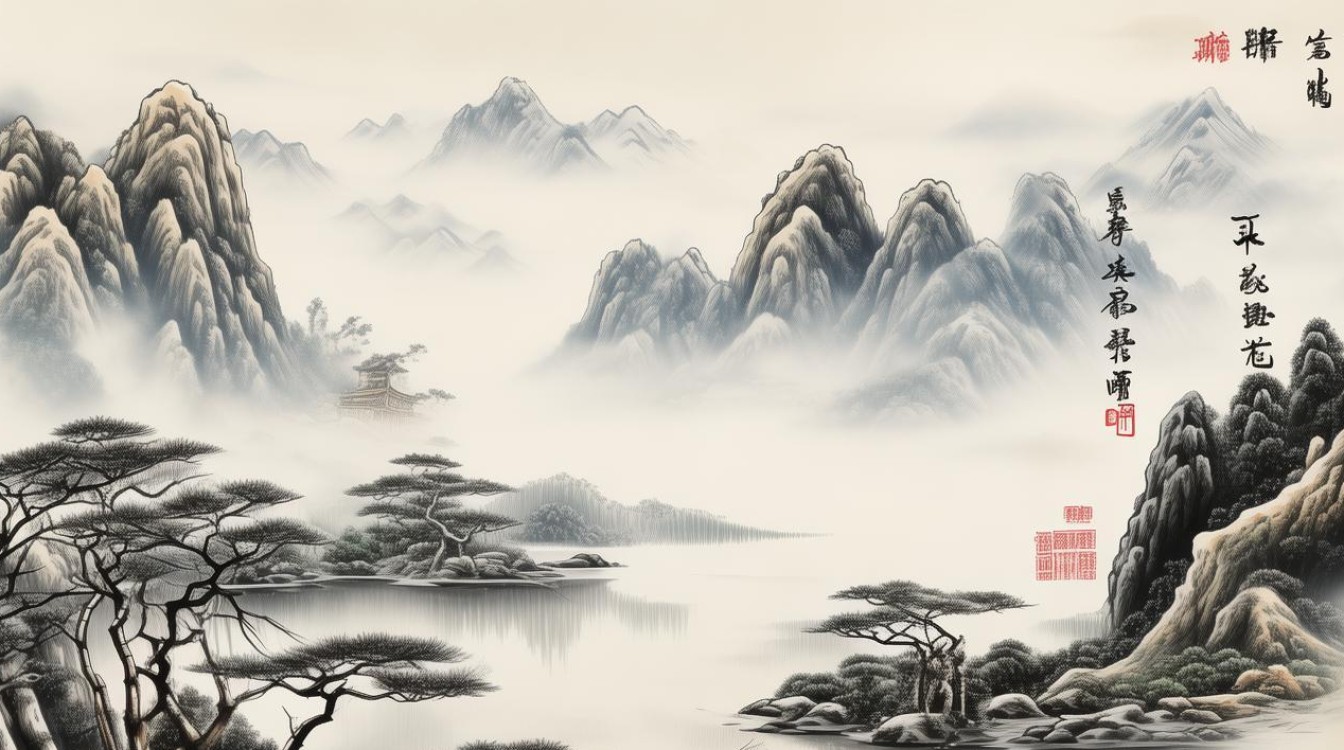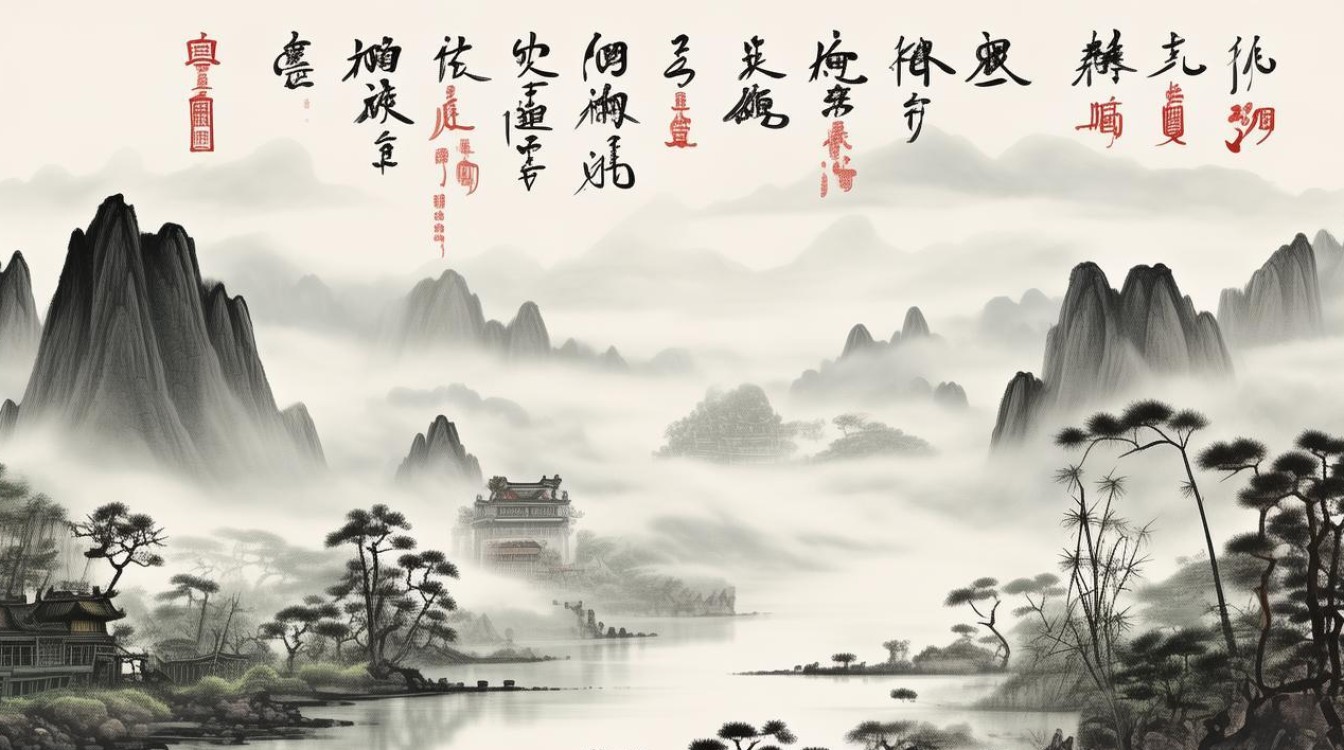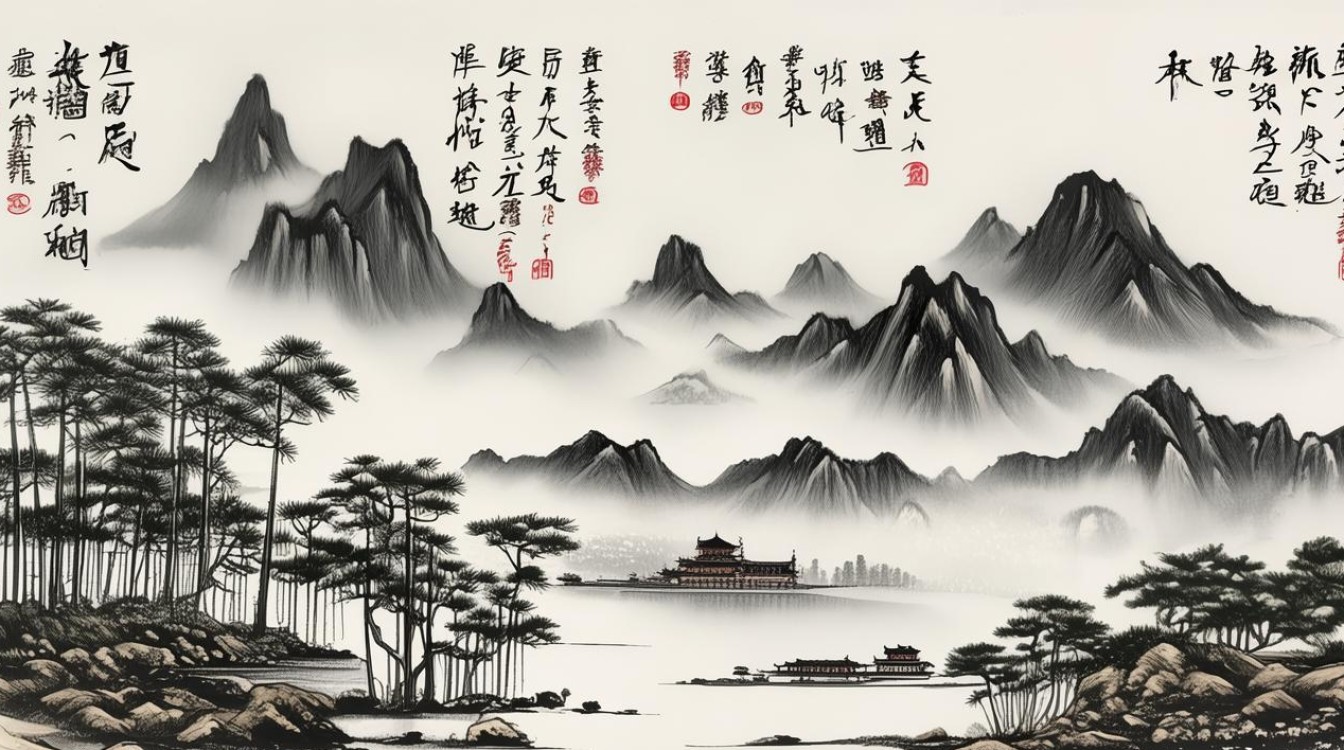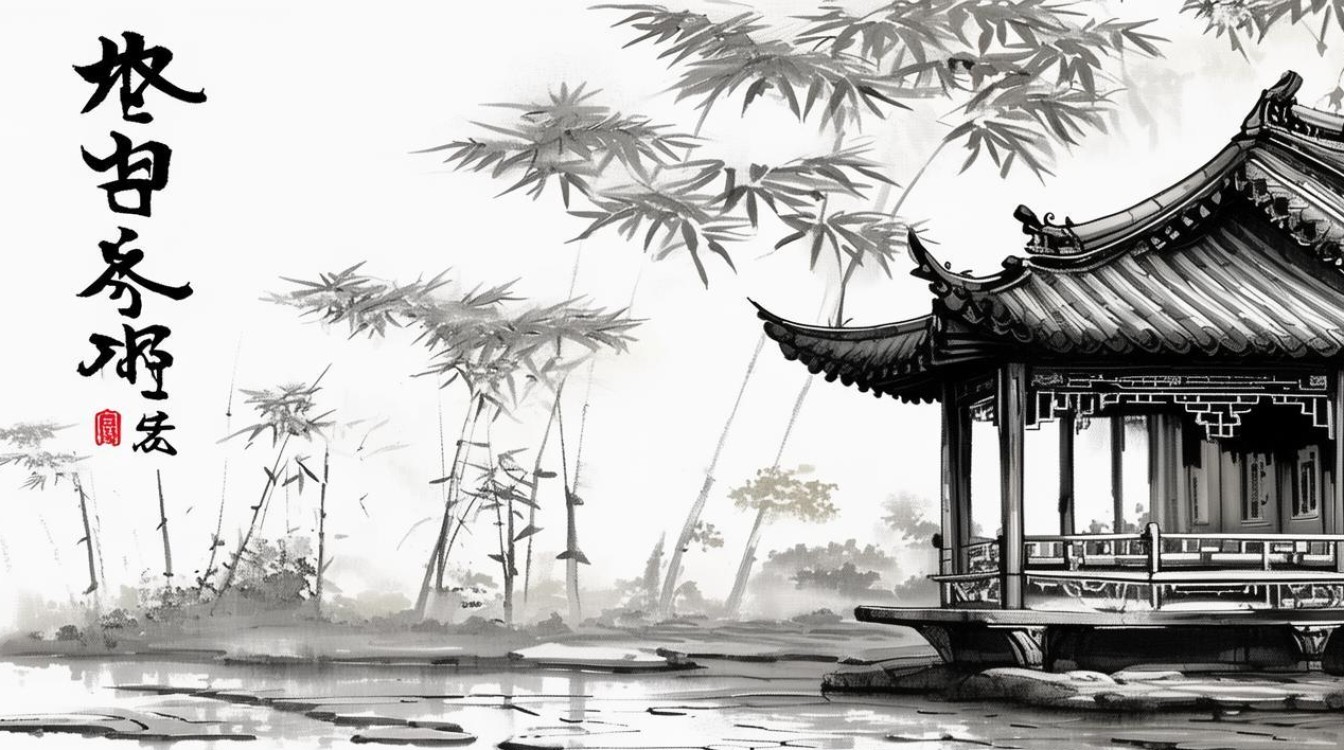Chinese ink painting, known as shuǐmòhuà (水墨画), is a traditional art form with a history spanning over a thousand years. Its delicate brushwork, monochromatic tones, and philosophical depth have captivated audiences worldwide. For art enthusiasts, students, or anyone interested in this exquisite medium, understanding its terminology in English can enhance appreciation. Below is a curated list of essential terms related to ink painting, along with explanations to deepen your knowledge.

Core Techniques and Tools
-
Ink Stick (墨, mò) – A solid block of ink made from soot and animal glue, ground against an inkstone to produce liquid ink. The quality of the ink affects the depth and richness of the strokes.
-
Inkstone (砚台, yàntái) – A stone surface used to grind the ink stick with water, creating the desired consistency for painting.
-
Brush (毛笔, máobǐ) – Typically made from animal hair (wolf, goat, or rabbit) attached to a bamboo handle. Different brushes create varying stroke effects, from fine lines to broad washes.
-
Xuan Paper (宣纸, xuānzhǐ) – A high-quality, absorbent paper specifically used for ink painting and calligraphy. Its texture allows ink to spread naturally, creating soft edges and gradients.
-
Freehand Brushwork (写意, xiěyì) – A spontaneous, expressive style emphasizing the artist’s emotion over precise representation.
-
Gongbi (工笔, gōngbǐ) – A meticulous, detailed technique with fine brushstrokes, often used for figurative or decorative subjects.
Aesthetic Concepts
-
Negative Space (留白, liúbái) – The intentional use of blank areas to suggest depth, atmosphere, or unseen elements. This principle reflects Daoist and Zen philosophies of emptiness and simplicity.
-
Qi (气, qì) – The vital energy or spirit infused into a painting, giving it life and movement.
-
Bone Method (骨法, gǔfǎ) – The structural essence of brushstrokes, reflecting the artist’s skill and the subject’s inner strength.
-
Four Gentlemen (四君子, sì jūnzǐ) – A collective term for plum blossoms, orchids, bamboo, and chrysanthemums, symbolizing noble virtues in Confucian thought.

Common Subjects and Motifs
-
Landscape (山水, shānshuǐ) – Mountains and water scenes dominate ink painting, representing harmony between humanity and nature.
-
Bamboo (竹, zhú) – A symbol of resilience and integrity, often painted with swift, confident strokes.
-
Plum Blossoms (梅花, méihuā) – Representing perseverance and hope, as they bloom in winter.
-
Birds and Flowers (花鸟, huāniǎo) – A popular genre combining natural elements with symbolic meanings.
-
Dragons and Tigers (龙虎, lónghǔ) – Mythical and powerful creatures often depicted with dynamic, energetic brushwork.
Historical and Cultural Terms
-
Literati Painting (文人画, wénrénhuà) – Works created by scholar-artists, emphasizing personal expression over technical perfection.
-
Ink Play (墨戏, mòxì) – A term describing experimental or playful approaches to ink painting, often abstract or unconventional.
-
Seal (印章, yìnzhāng) – A carved stamp bearing the artist’s name or a poetic phrase, pressed onto the painting in red ink.
-
Colophon (题跋, tíbá) – Inscriptions added by the artist or later admirers, including poems, comments, or signatures.
-
Six Principles of Painting (六法, liùfǎ) – Outlined by Xie He in the 6th century, these guidelines include spirit resonance, brushwork, and composition.

Practical Phrases for Artists
-
Wet-on-Wet Technique (破墨, pòmò) – Applying ink or color onto a damp surface to create soft, blended effects.
-
Dry Brush (枯笔, kūbǐ) – Using minimal ink to produce rough, textured strokes.
-
Splashed Ink (泼墨, pōmò) – A dramatic method where ink is flung or poured onto paper for spontaneous patterns.
-
Controlled Wash (渲染, xuànrǎn) – Gradual layering of diluted ink to build depth and tone.
-
Flying White (飞白, fēibái) – A calligraphic effect where dry brushstrokes reveal streaks of white paper.
Philosophical Influences
-
Wu Wei (无为, wúwéi) – The Daoist principle of "non-action," encouraging natural, effortless brushwork.
-
Yin and Yang (阴阳, yīnyáng) – The balance of light and dark, solid and void, central to composition.
-
Zen Buddhism (禅, chán) – Emphasizing mindfulness and spontaneity, influencing minimalist ink works.
-
Harmony (和, hé) – The ultimate goal, where all elements coexist in balance.
-
Transience (无常, wúcháng) – The acceptance of impermanence, reflected in fleeting brushstrokes.

Modern Interpretations
-
Contemporary Ink Art (当代水墨, dāngdài shuǐmò) – A fusion of traditional techniques with modern themes and mediums.
-
Ink Abstraction (抽象水墨, chōuxiàng shuǐmò) – Non-representational works focusing on texture and movement.
-
Digital Ink Painting (数码水墨, shùmǎ shuǐmò) – Using software to replicate ink effects, bridging tradition and technology.
-
Global Ink (国际水墨, guójì shuǐmò) – Cross-cultural collaborations expanding the art form’s boundaries.
-
Eco-Ink (生态水墨, shēngtài shuǐmò) – Sustainable practices, such as plant-based inks and recycled paper.
Learning and Appreciation Tips
- Study Masters: Examine works by historical figures like Bada Shanren or Qi Baishi to understand stroke techniques.
- Practice Calligraphy: Brush control in calligraphy translates to better ink painting skills.
- Observe Nature: Traditional artists often painted from memory, internalizing natural forms.
- Experiment Freely: Modern tools like watercolor paper or synthetic brushes can offer new possibilities.
Chinese ink painting is more than an art form—it’s a meditation on nature, philosophy, and human expression. Whether you’re an artist, collector, or admirer, these terms provide a gateway to its profound beauty. The interplay of ink and paper, the rhythm of brushstrokes, and the silence of negative space all invite us to pause and reflect. In a fast-paced world, ink painting remains a timeless reminder of simplicity and depth.

